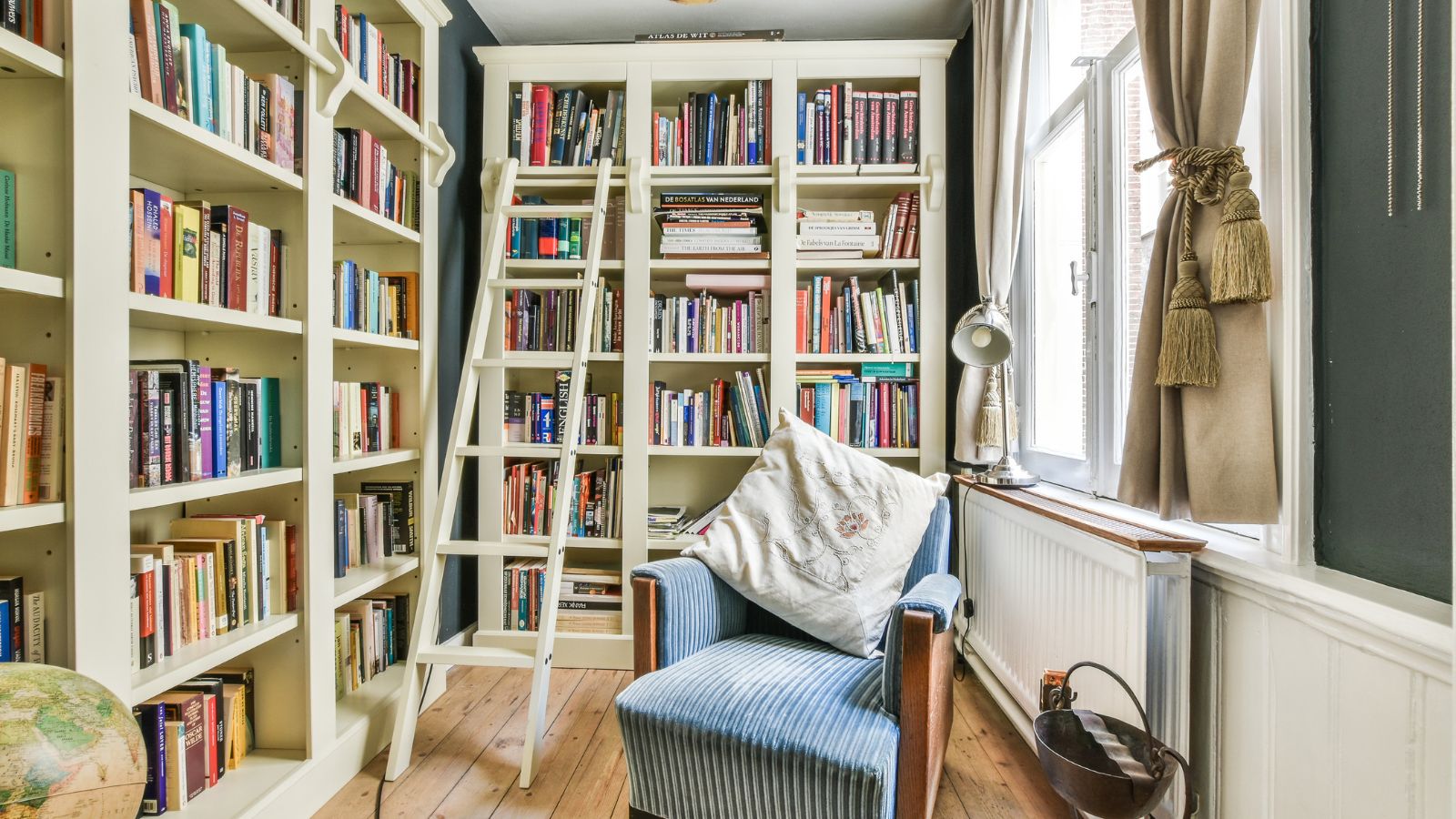The design of a home library can be as unique as the person curating it. Whether it’s a cosy nook under the stairs or a grand room with floor-to-ceiling bookshelves, the design should reflect the reader’s personality and reading habits. This article will explore various home library designs, offering tips and inspiration for bibliophiles looking to create their perfect reading sanctuary.
Home Library Design
A home library is more than just a space for books. It’s a direct reflection of a reader’s personality, values, and interests. It conveys a message about the individual – their love for literature, their curiosity for knowledge, and their flair for aesthetic design. So, home library design deserves thoughtful consideration and planning.
Initially, the focus may rest on the practical aspects like the amount of floor space, shelving units, and seating arrangements. Yet, the importance of home library design extends beyond merely housing books or providing a comfortable seat. It’s about curating a space that inspires, rejuvenates, and provides solace. This makes room planning, colour selection, lighting, and décor just as important – they all play a part in moulding the reader’s experience.
Different design styles cater to different reading habits. Design style and reading habit become interlinked; perhaps more than one might initially suspect. For instance, a personality that thrives on order and structure may prefer a minimalist design while an avid fantasy reader might lean towards a whimsical design. Choosing a design style that syncs with the reader’s habit enriches the journey into the world of books, making it more immersive and personal.
 Personalised Touch: Reflecting Personality in Design
Personalised Touch: Reflecting Personality in Design
There’s a rationale behind every colour choice, furniture placement, and décor selection in a home library. They’re not purely aesthetic decisions; each selection is an extension of the homeowner’s character. An organised stack of books may indicate a meticulous personality while eclectic combinations of book genres may imply an adventurous spirit.
Delving into the choice of furniture, it holds a hint of an individual’s lifestyle and preferences. A sleek, modern desk could suggest a penchant for minimalist style and a value for functionality over tradition. On the flip side, a plush armchair with a footrest screams a comfort-first approach.
Color psychology also plays a significant role. Blues and greens typically inspire calm while reds and oranges are often chosen to motivate and energise. On the other hand, a monochromatic scheme might imply a preference for simplicity, consistency, and elegance. Remember, it’s more than just shades and hues; it’s about letting the true colours of personality shine through.
In addition, the use of lighting can set the mood for a reading space. Track lighting for a modern, sophisticated feel or a classic lamp for a cosy, homey ambiance. It’s all a testament to the reader’s preference – whether they’re a late-night reader who loves the quiet of midnight or someone who enjoys lounging with a book in the morning sun.
 Small Space Solutions for Home Libraries
Small Space Solutions for Home Libraries
One of the common misconceptions about home libraries is that they require an extensive space. However, it’s not the size that defines a home library; it’s the atmosphere and personal touch that truly distinguishes it. Creating a home library in a small space might seem challenging, but with a bit of creativity, snug spaces can be turned into cosy reading nooks.
The first key strategy lies in optimising shelf space. Wall-mounted bookshelves are a great way to store your books without taking up valuable floor space. Streamline your shelves to the ceiling, if possible, making a grand statement and utilising the vertical space. Moreover, corners often remain underutilised in homes. Installing corner shelves or creating a floor-to-ceiling bookshelf can give these spaces a purpose, offering plenty of room for your treasured tomes.
Choosing the right furniture can make a huge difference. In smaller spaces, multifunctional furniture is your best friend. A comfortable chair that also serves as a storage box or a slimline sofa that can turn into a day bed allows you to have an inviting reading spot without compromising on space.
Creative placement of the furniture can also maximise small spaces. Positioning a chair next to a window not only ensures enough daylight for reading but also creates an illusion of space with the outside view. Similarly, placing a bookshelf behind a sofa or above a desk integrates the storage into your living area, making the library part of your everyday life.
